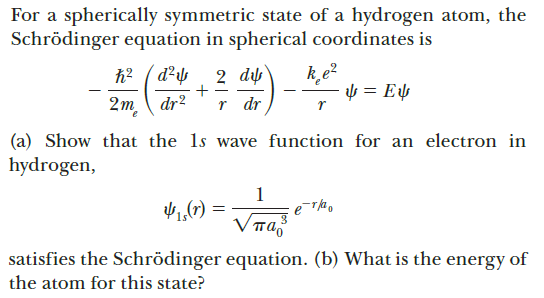
This principle can be mathematically derived from the Fourier transforms between momentum and position as defined by quantum mechanics, but we will not derive it in this article. − ℏ 2 2 m ∂ 2 ∂ x 2 Ψ ( x, t ) + V ( x ) Ψ ( x, t ) = i ℏ ∂ ∂ t Ψ ( x, t ) is the uncertainty in momentum. The exact cause and interpretation of wave function collapse is still widely debated in the scientific community.įor one particle that only moves in one direction in space, the Schrödinger equation looks like:

This is called wave function collapse and seems to be caused by the act of observation or measurement. However, when one of these properties is measured it has only one specific value (which cannot be definitely predicted), and the wave function is therefore in just one specific state. The wave function can be in a number of different states at once, and so a particle may have many different positions, energies, velocities or other physical properties at the same time (i.e. The wave function can be thought of as a picture of how this particle or system acts with time and describes it as fully as possible. This information can be found by mathematically manipulating the wave function to return real values relating to physical properties such as position, momentum, energy, etc. These values have no physical meaning (in fact, they are mathematically complex), yet the wave function contains all information that can be known about a particle or system. It defines a wave function of a particle or system (group of particles) which has a certain value at every point in space for every given time. It is a mathematical equation that was thought of by Erwin Schrödinger in 1925.

The Schrödinger equation is a differential equation (a type of equation that involves an unknown function rather than an unknown number) that forms the basis of quantum mechanics, one of the most accurate theories of how subatomic particles behave. #= int_(0)^(a)Bsin((npix)/a)Bsin((npix)/a)dx#Īnd eventually get that #B = sqrt(2/a)#, since #psi^2# must give a #100%# probability of finding this particle somewhere in this box.Bust of Erwin Schrödinger, at the University of Vienna. (Surprisingly, this can be applied to real systems, like butadiene, for example, or other conjugated #pi# systems.)įor completion's sake, as a sidenote, we would also obtain #psi# for this system as:Īnd to get what #B# is, we normalize the wave function to get: So this is the energy for a particle elastically traveling back and forth in a confined, 1D box. Now if we plug back into the definition of #k#, where we now know that #k = (npi)/a# for this system: Here, the physically-meaningful and nontrivial solution is that #sin (ka) = 0#, and this is only if #ka = npi#. The second (consecutive) condition gives: In order for the whole thing to go to #0#, we know that #cos(0) = 1#, so we must force the condition by saying that #A = 0#. The boundary conditions for this system must be set for it to be physically meaningful (the particle must vanish at the boundaries of the system). The general solution to this situation for the wave function #psi# is: SOLVING FOR k BY SETTING BOUNDARY CONDITIONS The above equation can be rewritten in an even more general form: This has now become a second-order differential equation for what is known as the particle in a box model, where the particle is in a well of infinite potential walls, with a closed interval #. Plugging this into the starting equation, we solve for the second-order differential form of the Schrodinger equation for this system: OBTAINING THE SECOND-ORDER DIFFERENTIAL EQUATION Where #grad^2 = (d^2)/(dx^2)#, the second derivative with respect to the #x# coordinate, the first overall term is the kinetic energy operator, and the potential is #V(x) = 0#. The most common thing we can obtain from the Schrodinger equation is the energy.įor example, take a single particle moving back and forth in a 1-dimensional box:įor this system, since the particle is said to move elastically horizontally, there is all kinetic and no potential energy. In general, this equation is designed such that a unique Hamiltonian operator and wave function can be specified for a particular system.


 0 kommentar(er)
0 kommentar(er)
